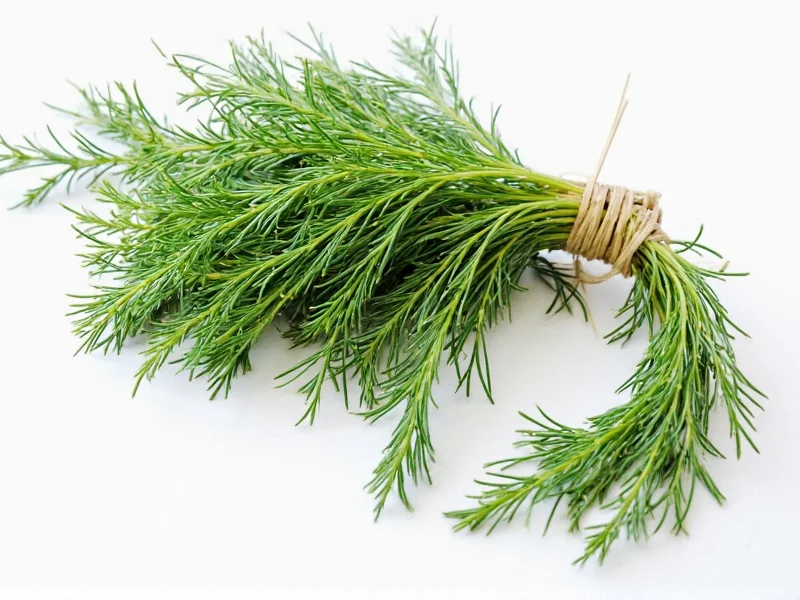When you're in the middle of cooking and realize you've run out of dill seed, knowing reliable alternatives can save your recipe. Dill seed has a distinctive flavor profile—slightly sweet, grassy, with citrus and anise notes—that makes it challenging to replace perfectly. However, several common pantry ingredients can effectively substitute for dill seed depending on your specific culinary application.
Understanding Dill Seed's Flavor Profile
Dill seed comes from the same plant as dill weed but offers a more concentrated, earthy flavor with warm undertones. Its unique combination of citrus, grassy, and slightly peppery notes makes it essential in pickling, breads, and certain fish dishes. When seeking a dill seed replacement, consider whether you need to replicate its:
- Earthy, grassy base notes
- Citrus undertones
- Anise-like sweetness
- Texture in pickling applications
Top Substitutes for Dill Seed Ranked by Effectiveness
1. Dill Weed (Fresh or Dried)
Dill weed provides the closest flavor match since it comes from the same plant. Use 2-3 times the amount of dill weed compared to dill seed, as the seeds contain more concentrated flavor. Fresh dill works best added at the end of cooking, while dried dill weed can be incorporated earlier. This is the ideal near perfect substitute for dill seed when available.
2. Fennel Seeds
Fennel seeds share dill's anise-like qualities but have a sweeter, more pronounced licorice flavor. Use half the amount of fennel seeds compared to dill seed to avoid overpowering your dish. This substitute works particularly well in fish recipes as alternative to dill seed and in Mediterranean dishes where a subtle licorice note complements other ingredients.
3. Caraway Seeds
Caraway offers similar earthy, slightly citrus notes but with more pepperiness. Use half the amount of caraway seeds compared to dill seed. This substitute shines in rye bread recipes needing dill seed replacement and hearty stews where its robust flavor holds up well.
4. Anise Seeds
Anise seeds provide the strongest licorice flavor of all substitutes. Use only one-third the amount of anise seeds compared to dill seed. This works best in sweet applications or when you specifically want to emphasize the anise notes in your dish. Consider this option for pickling spice blend without dill seed when creating a more pronounced licorice flavor profile.
| Substitute | Ratio to Dill Seed | Best For | Flavor Difference |
|---|---|---|---|
| Dill Weed (dried) | 2-3:1 | All-purpose cooking | Slightly milder, less earthy |
| Fennel Seeds | 1:2 | Fish, Mediterranean dishes | Sweeter, stronger licorice |
| Caraway Seeds | 1:2 | Breads, stews, hearty dishes | More peppery, earthy |
| Anise Seeds | 1:3 | Sweet applications, pickling | Strongest licorice flavor |
| Dill Pickle Juice | 1:1 (liquid) | Pickling, dressings | Softer dill flavor, adds acidity |
Specialized Substitutes for Specific Applications
Dill Pickle Juice for Pickling
When making pickles and you've run out of dill seed, dill pickle juice serves as an excellent liquid substitute. Use an equal amount of pickle juice in your brine. This works particularly well as a quick substitute for dill seed in pickling because it already contains the right balance of dill flavor with vinegar and salt.
Celery Seed for Texture and Earthiness
Celery seed provides similar texture and earthy notes, though it lacks dill's citrus elements. Use a 1:1 ratio. This substitute works best in soup recipes needing dill seed alternative where texture matters more than precise flavor replication.
What NOT to Use as Dill Seed Substitutes
Avoid these common missteps when looking for dill seed alternatives:
- Dill relish - Too sweet and vinegary for most applications
- Dill dip mix - Contains many additional ingredients that will alter your recipe
- Dill pickles (chopped) - Adds unwanted texture and moisture
- Dill vinegar alone - Lacks the earthy seed component
Adjusting Recipes When Substituting
When replacing dill seed in your recipes, consider these adjustments:
- For baking: If using fennel or caraway seeds, toast them lightly first to mellow their stronger flavors
- For pickling: When using dill weed instead of seed, add it to the jar rather than the brine for better flavor distribution
- For sauces: If using dill pickle juice, reduce other liquids slightly to maintain proper consistency
- For meats: When substituting caraway for dill seed in rubs, add a pinch of lemon zest to replicate dill's citrus notes
Creating Your Own Dill Seed Substitute Blend
For the most versatile homemade dill seed replacement, combine:
- 1 part fennel seed
- 1 part celery seed
- ½ part anise seed
Grind these together for a custom blend that captures dill seed's complex flavor profile. Store in an airtight container for up to 6 months. This blend works particularly well as a long-term substitute for dill seed when you frequently cook dishes requiring this ingredient.











 浙公网安备
33010002000092号
浙公网安备
33010002000092号 浙B2-20120091-4
浙B2-20120091-4